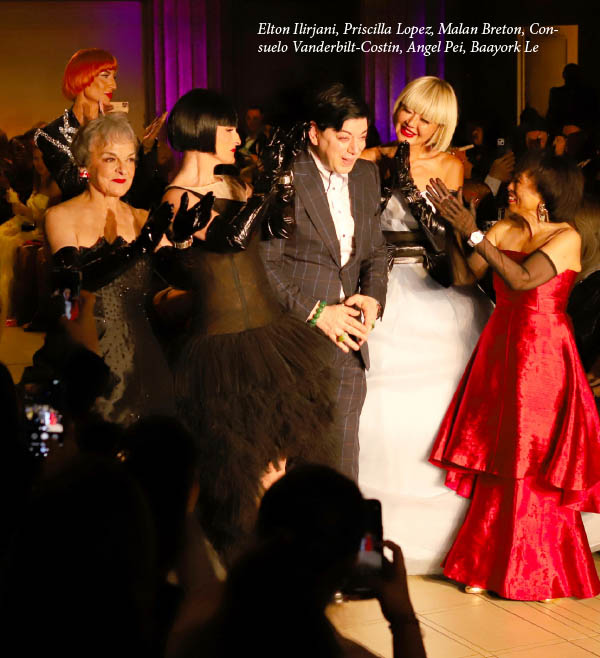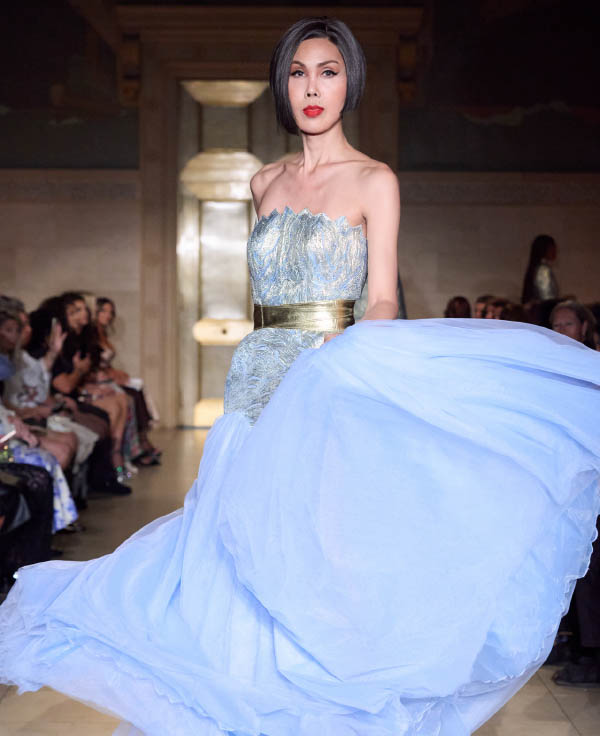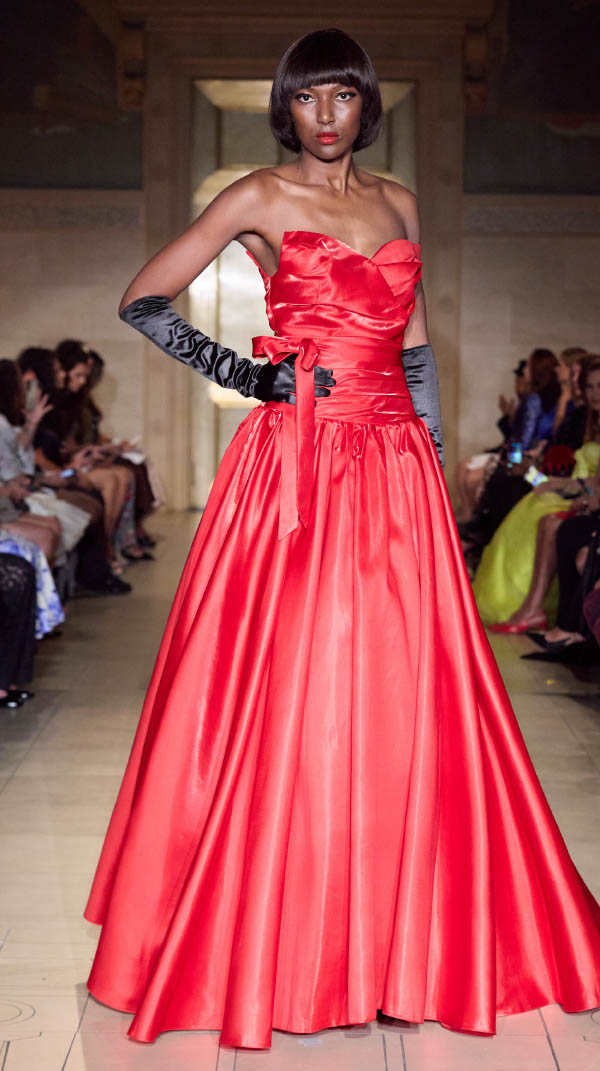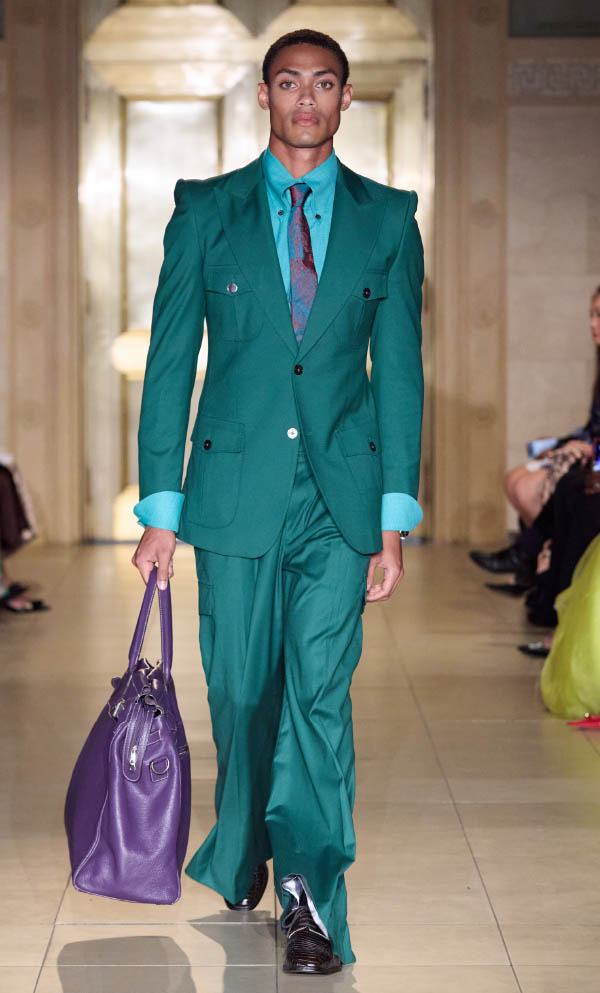Malan Breton Redefines the Runway
When Broadway, Fashion, and Humanity Collide
At New York Fashion Week, it’s easy to get lost in the whirlwind of runway debuts, celebrity front rows, and endless after-parties. But every so often, a show stops the city in its tracks. That’s exactly what happened when Malan Breton unveiled his Spring Summer 2026 collection, The Age of the Machine, The Heart of Humanity, at the Léman Ballroom.
This wasn’t a typical fashion week moment. It was something far more ambitious: a cultural collaboration where Broadway met couture, where technology conversed with tradition, and where a designer used his platform to elevate not just artistry, but humanity.
A FUSION OF WORLDS
Malan Breton has never been one to color inside the lines. Over his career, he’s blurred boundaries between fashion, film, and performance. Yet with SS26, he took that concept further by making the runway itself a stage. Instead of models simply strutting to a beat, the show became a full production: Tony Award winners Priscilla Lopez and Baayork Lee walking as living characters, a script-driven narrative unfolding in real time, and an original musical score written by Breton himself.
Few designers have the courage to combine so many creative disciplines in a single presentation. But Breton thrives in that chaos. It’s part of what has made him “the Internet’s favorite designer” and, as British Vogue once put it, “the most influential designer you’ve never heard of.”
FASHION WITH PURPOSE
Beyond the spectacle, Breton anchored his show in something deeper.


The opening act, The Heart, was dedicated to CaringKind, the Alzheimer’s nonprofit supporting families and caregivers. In a week often dominated by self-promotion, here was a collection that asked us to pause and consider compassion.
That theme carried through each act: Time, in collaboration with King Seiko, a meditation on precision and the ticking clock; Transformation, celebrating resilience and reinvention with Wigs.com and Vivienne Mackinder; and Legacy, drawing on the opulence of the Gilded Age through SohoMuse. Each partnership wasn’t just a sponsor relationship—it was woven into the DNA of the designs themselves.
REINVENTING THE RUNWAY EXPERIENCE
For me, what made this show remarkable was not just the clothes—though Breton’s mastery of silks, brocades, and tailoring never disappoints—but the way he challenged the very concept of a fashion show. Too often, runway presentations can feel transactional: here are the looks, now buy them. Breton instead created a living piece of art, one that asked us to reflect on the tension between the machine-driven future and the enduring heart of humanity.
His decision to compose the soundtrack himself was emblematic of that philosophy. The music fused orchestral swells with futuristic soundscapes, making the garments feel like extensions of the score. It reminded me that fashion, at its highest level, is not just about clothing the body—it’s about engaging every sense.
A WHO’S WHO OF NEW YORK
Of course, this being New York Fashion Week, the guest list was as glittering as the gowns. Tony winners Danny Burstein and Lucia Hwong Gordon joined the mix, along with Consuelo Vanderbilt-Costin, Jean Shafiroff, and nightlife impresario Noel Ashman. It was one of those rare events where the worlds of Broadway, high fashion, philanthropy, and society all crossed paths—and Breton stood confidently at the center of it.


THE BRETON LEGACY
What strikes me most about Malan Breton is his ability to reinvent himself without losing authenticity. From designing for icons like Priyanka Chopra and Billy Porter, to starring on Bravo’s The Malan Show, to directing award-winning films, his career is a testament to reinvention. Now, by merging his skills as a composer, designer, and storyteller, he has once again expanded what it means to be a creative force.
In a world obsessed with speed and algorithms, Breton dares to slow us down and remind us of something vital: humanity will always outshine the machine. His SS26 collection wasn’t just a fashion statement—it was a cultural one.
As I left the ballroom that night, I realized this wasn’t just another New York Fashion Week presentation. It was a manifesto. A declaration that fashion can be more than commerce. It can be art, it can be activism, and most importantly, it can be a bridge between the worlds we live in and the worlds we hope to create.





